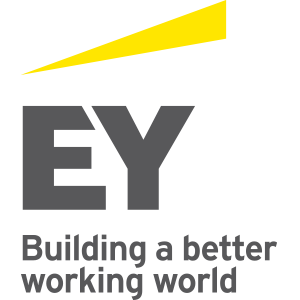The Myth of the Insta-Entrepreneur by Andre Hampton, founder and managing director of StreamS Capital and of Factory 114.
With a few hundred bucks, a snazzy social media profile and a couple of clever posts, everyone can look like a successful “Insta” entrepreneur, right? Not exactly. The fantasy might look like that, but the reality is quite different. Those people who are committed, work diligently to solve problems, and continue to innovate—those are the people who find real success within their reach. Assuming of course that they don’t quit or give up, despite the seemingly insurmountable challenges that await them along their journey.
Hard Work is Key
Let’s face it, entrepreneurship is hard. Real entrepreneurs know this. When it comes to starting, stabilizing, and growing a successful endeavor regardless of whether it’s a tech company or a service-based business, the truth is the same. It’s a lot of hard work to get off the ground and to grow. If you go into it knowing that, you’ll save yourself a lot of heartache. Expect that nothing will be handed to you. Accept that you need the tenacity to get the job done and the fortitude to withstand the long days and years ahead. If you don’t, it’s simply not going to happen.
Most startups fail. Most small businesses fail. An overwhelming number of founders find themselves in this position within their first three years. They have to face the music that “it didn’t work.” They either move on to a new entrepreneurial idea, or end up searching for a “real” job so they can support themselves and their families.
I promise this article isn’t all doom and gloom. There is a light at the end of the tunnel, but to get there we have to look at the most common and basic reasons behind why businesses fail. We will start with the assumption that the entrepreneur has a quality product or service. Failure can still happen for these reasons:
Not Enough of the Right Resources
Many new businesses are under-capitalized and have limited access to the resources they need to develop and grow. On rare occasions, they are over-capitalized. This can often lead to founders thinking they can solve their start-up problems by throwing money into the business. Money isn’t the main resource they need—small businesses also need pure ingenuity and creative solutions. Those lead to strong competitive advantages and unique value propositions. If people aren’t forced to think through every possible (and impossible) theory they might miss the breakthroughs that take the business to the next level. Or they could end up developing a completely new business idea that is a more impactful industry-wide solution. In turn, that creates more value than they anticipated.
Lacking a Clear Direction
Another reason start-ups fail is because they aren’t extremely clear on what they are offering nor are they able to effectively communicate that message to their target market or to investors. Maybe they have a muddy vision because they are scrambling to make money and so they start throwing darts in multiple directions. However, having clarity and direction enables a founder and team to move forward in a cohesive direction and overcome the ten thousand obstacles that will inevitably come up. Every time something happens, the team can come back to the core vision and make a decision based on that. Being able to communicate your unique solution in a clear, concise manner is imperative to success.
Communicate with the Right People
You can have the right message, but if you aren’t getting it to the right audience, you’re missing major opportunities. If a company’s target market doesn’t know who they are or what they do, how will they ever be able to engage them and turn them into customers, clients, or investors?
Today’s default mode for increasing a personal or corporate profile and getting this message out is social media. Social media is a fickle world, and the best strategy is to put more thought into coming up with the best ways to reach your intended audience.
There are a plethora of advertising and marketing channels to reach prospects, but a shotgun approach will cause a company to go broke faster than anything. Marketing budgets can be blown out of the water when companies focus on awareness and branding without strategically allocating marketing campaigns so they generate an immediate return on investment.
Create Effective Communications
Hyper-targeted advertising campaigns help ensure that the offer is only being presented to an actual targeted prospect who has in some way already expressed an interest. These prospects have an existing want or need for your product or service to help them solve a problem. Direct mail, long-form sales letters, educational content, and a healthy dose of expertise and authority building can go further when paired with an effective public relations strategy. Together, these two strategies can help get a business in front of the perfect target market. When executed correctly, the right communications strategy can help generate sales, attract talent, and prospective investors, all without wasting money on blind spending.
Plan for Long-Term Success
Overcoming the challenges above, building relationships, and creating strategic partnerships are all imperative for continued growth and a company’s long-term success. A great location that supports businesses and fosters entrepreneurial growth also helps.
Tampa and St. Pete/Clearwater are booming with entrepreneurs and growth right now. These areas bounced back from the downturn stronger and more vibrant than ever. Tampa has recently been named one of the best cities in America to live in, and Florida’s overall business-friendly atmosphere is getting even more so every year.
Our city and state leaders are looking ahead by collaborating with the businesses and service providers who have been the voice for entrepreneurs. They want to work together to cement Florida as a top destination for innovation, technology, and overall entrepreneurship. If done correctly, our area will become the next Silicon Valley in the coming decade. There are a number of initiatives in place to help develop and attract talent, investors, and mentors. Leaders are already thinking about the solutions that will be needed, not just now, but ten, fifteen, and twenty years from now, to make Tampa one of, if not the, best place in America to start and grow a company.
Why is this perfect? For several reasons. Despite Tampa being a fairly large city, it still has a small-town feel. Our diverse community is genuinely warm and welcoming. People here are ready, willing, and able to connect and make introductions to others who can truly help. Connecting with political and corporate leadership is another benefit that Tampa offers, and one that you’ll be hard-pressed to find in any other major city. It’s easy to feel like you have a family within the community, a family who wants to see you succeed.
The people of this area believe that when you succeed, we all succeed. We proudly support founders and small business owners who are involved in the community and we love sharing stories of companies that are doing big things, making an impact, and creating value.
When you hit any of the roadblocks mentioned above, support and advice are key to navigating your way out of them. Our community is primed and ready to help entrepreneurs overcome these and many other major challenges on the road to success. We look forward to the transformation and growth that is Tampa Bay.
About the Author: Andre Hampton is the Founder and Managing Director of StreamS Capital and of Factory 114. He’s a lifelong entrepreneur with more than twenty years of experience in business, finance, and real estate. An Investment Advisor, Qualified Family Office Professional and author of the book, Keep the Change: Maximizing Legacy and Lifestyle, Andre specializes in working with successful entrepreneurs and business owners. His niche is in businesspeople who expect to have liquid assets between eight and twenty-five million dollars or more. During his career, he developed a highly analytical and strategic investment mindset that identifies and capitalizes on emerging market opportunities to achieve expected returns, while also maximizing flexibility and asset protection.



















